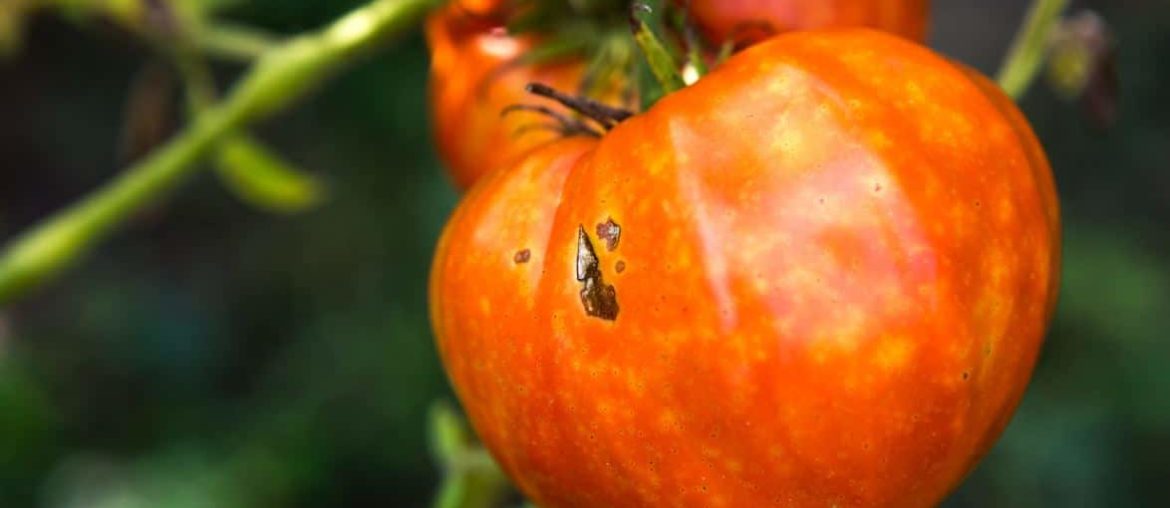Your tomato plants are covered in brown spots, it is certainly an attack due to mildew. In this situation, you have to act before your tomatoes are completely ravaged by the disease. Discover our tips that help you fight this invasion!
Remove the affected parts
Take a secateurs or a knife and observe the plants well. Cut off any parts that are contaminated and put them in a bucket of water. An affected plant should never be left in the midst of healthy plants.
This step is a bit long, but it is still essential to save your plants. Sometimes the mildew has gone around the stem, but there are healthy suckers left upstream, so you have to cut the stalk and let the suckers flourish. If the downy mildew has attacked the stem superficially, do not cut it, but treat it.
Disinfect your tools regularly with 70 ° alcohol.
Rub your hands with fresh mint before cutting, this plant fights against fungi.
Avoid touching your hands with the diseased parts.
Always cut at the healthy part and not in the mildew.
Watch for the disease
Start monitoring the disease even before planting, this will prevent plants covered with late blight. If you want to avoid it altogether, grow your tomatoes under cover.
Air
Downy mildew also moves through the circulation of the air that contains it. It is therefore necessary to carry out your plantings in a sufficiently ventilated way to avoid it. The easiest way is to leave between 50 centimeters and 1 meter between each plant if possible. It is also necessary that the leaves are always as dry as possible.
Baking soda
This product definitely full of surprises is also effective in the fight against mildew. It just needs to be diluted in water at the rate of 5 grams per liter of water. It can also be in black soap or cooking oil. It has the power to stop the disease very quickly.
Vary the tomato plantations
The easiest way to limit the spread of late blight is not to grow just one resistant variety, but to grow several. Then, all you have to do is stagger the plantings and therefore the production.
Copper wire
Put a copper wire that you introduce into the stem of the plant. It is necessary to begin by removing the varnish, covering the wire with a simple flame of lighter. Thanks to the humidity, the copper will form sulphate thanks to the wire contained in the rod. This diffuses inside the plant and it has the property of protecting your plants from mildew.
Watch out for the compost
If you use compost, be careful that it does not contain contaminated plants. It is a reflex to have, the diseased plants must not be put in the compost. This would then only contaminate the plants that you are having difficulty caring for.
Water your tomato plants well
To prevent the spread of this disease, the first thing to do is to avoid the stagnant humidity which allows it to develop. Never water the foliage of the plants. It is also best never to water in the evening, because on cool nights the water does not evaporate properly, it is best to do so in the early morning.
Garlic manure
To act upstream, garlic manure is a preventive treatment that is effective. You can spray it on the foliage of tomato plants once every ten days. It should also be placed on the ground, where the fungus spores hide.
Nettle manure
Like garlic manure, it is effective in prevention. To do it, nothing could be simpler! Take big nettles, then chop them and put them in a bin. Then add water at the rate of one liter for 100 grams of nettles, cover and stir every other day for a week. Then spread the liquid manure obtained with a watering can, thanks to the presence of minerals, it fights this disease.
Bordeaux mixture
It is also a preventive treatment with formidable effectiveness against mildew. You should know that this is considered a pesticide. If you use only low doses, it is still allowed in organic cultivation. It is preferably applied from the beginning of spring to the end of autumn, every two weeks and after the rain.
Read also : Beware of vegetable garden diseases!









